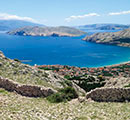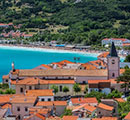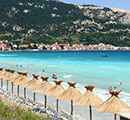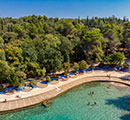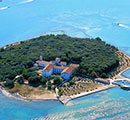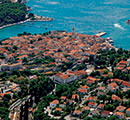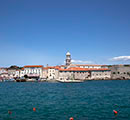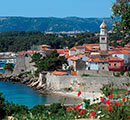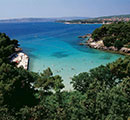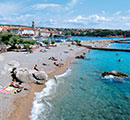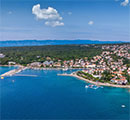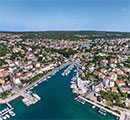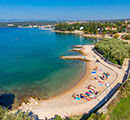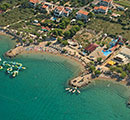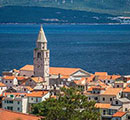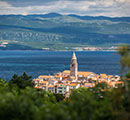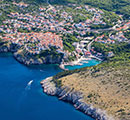The City of Krk
Town Krk is situated on the southwest coast of the island and it's the largest city on the island. Throughout history, the town of Krk, was a witness to the various authorities who run them from the Romans in ancient times right up to the Italians in the 20 th century. The impact of these rule throughout history can be seen from the well-preserved and rich cultural and historical heritage that Krk town possesses: the walls, cathedral, temple, squares, streets, and much more.
Punat and the Island of Košljun
Punat, located on the east coast of the more than 3 km long wide Punat valley, is considered one of Krk's more recent villages. It is one of the largest nautical centres in Croatia and it's also the island's olive-growing center. The island of Košljun is connected wIth the island of Krk through ''barkajoli'' that sail 10 minutes journey from Punat to Košljun. The island of Košljun is known for it's rich vegetation and Franciscan monastery .
Vrbnik
Vrbnik is situated high up, at almost 50 metres above the sea. Position is on a truly special place, on a cliff that literally dives into the sea. The most importat product of Vrbnik is its golden white wine – the Žlahtina. Vrbnik is also known for its rich Glagolitic heritage.
Baška
Baska is situated in the wide bay on the far southeast of the island Krk, surrounded with vineyards and fertile fields, mounted by Treskavac mountain pass and its peaks Obzova and Hlam. Baska coast stretches on the east up to Vela luka and on the west there is the famous pebble, 1800 meters long beach, known as Vela plaža (The great beach). The area of Baška is also known for its rich Glagolitic heritage.
Biserujka cave
Biserujka Cave is located on the island of Krk 300 meters north-west of the Rudine village. The cave is adjusted to tourists and offers a wealth of cave decorations - calcareous sinters, stalagmites, and stalactites. According to a speleological classification, it represents a simple cave with mouth that lead into a gently sloping cave channel. Its underground areas include: Mouth, Balcony, Shaft, Great Hall, Northern Channel, Arched Hall and Cypress Hall.

